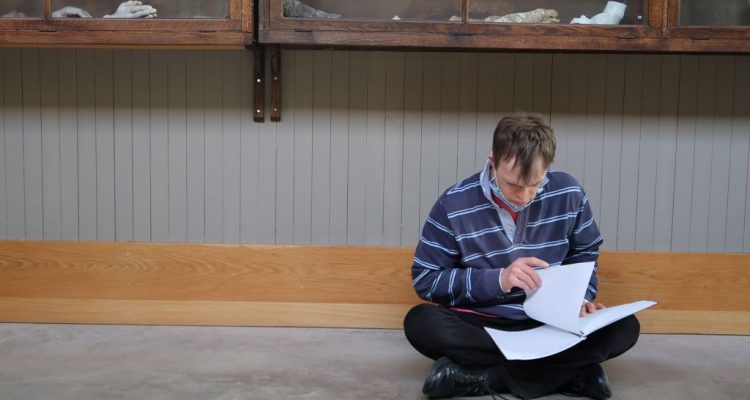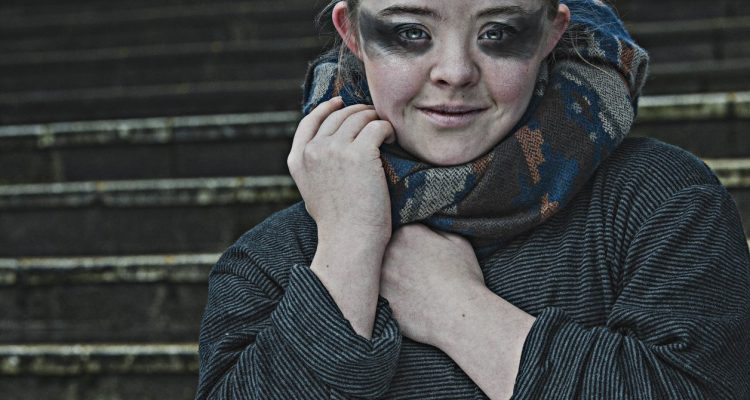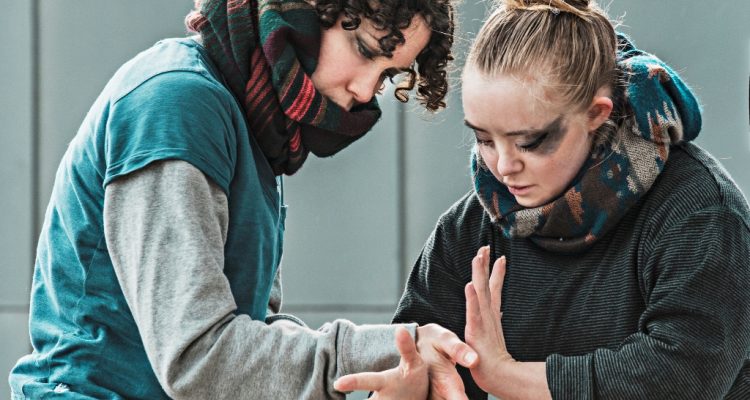Our Company Producer Sho Shibata gives his insight into producing The Awakening, which was the first touring dance production ever to be made by learning disabled choreographer.

Chris Pavia and some of the cast of The Awakening, staring moodily into the camera.
Producing work for a learning disabled artist raised a lot of questions about the nature of creative leadership. Stopgap’s new outdoor production The Awakening was our major production for summer 2014, and entrusting it to Chris Pavia did come with some pressure for everyone involved.
Addressing the issue
To begin with, I will be quite frank about the issues, as understanding them is the first step you take in finding a resolution. First and foremost, Chris’ disability lies in his learning, and makes it particularly difficult for him to articulate his ideas to people. This is mainly because his way of thinking is so unusual. In the context of him as an artist, it raised some questions about his creative leadership: If he isn’t able to communicate his ideas convincingly, how is he ever to get his creative team to do what he wanted?
Chris also found it difficult to understand that a creative process is a collaborative effort and that each individual has something particular s/he can offer that he should make the most of. Unless you are a polymath, every artist needs advisors and support from collaborators, and a good creative leader makes the most this during the creative process.
With these fundamental issues in leadership, you might think it completely crazy that we entrusted Chris with a major project. However, Chris has a very strong appeal and vision as a dance artist, and that made it worthwhile for us to try and resolve Chris’ issues. We also felt that Stopgap had the right team to make it happen for Chris.
Putting together the creative team
To work with Chris effectively, you must have a lot of patience for comprehending what he is getting at. You must also be willing to learn to understand which bit of his ideas is meaningful and which is slightly confused. Getting the hang of this requires years of experience, but thankfully, our dancers have a good understanding of how Chris thinks because they regularly work with him. But more importantly, our Artistic Director Lucy Bennett has been working with Chris for over a decade, and she was perfectly placed to help Chris take creative leadership as a choreographic coach.
Similarly, we also chose designers and composers based on their ability to understand the general feel of Chris’ vision. As they were less experienced at working with learning disabled artists, we decided to bring them into the process once the work had already taken some shape, so that Chris’ ideas were more or less set and clear enough for them to work from.
The role of the choreographic coach
The choreographic coach is a creative enabler, who has a firm understanding of the learning disabled artist’s vision. S/he must also have the know-how of the creative process because the role requires management of the creative team to sustain momentum during the creation period. As the choreographic coach, Lucy helped Chris out if his instructions and ideas started raising uncertainty within the team and effectively acted as a negotiator/translator to bring the process back on track. In effect, Lucy acted as an enabler for Chris by making sure that he retained leadership over the creative team and that the team could continue working to realise his artistic vision. Lucy also acted as an advisory editor later on in the process, which involved helping Chris put an order to his material. This enabled him to pay attention to how his work builds throughout, and what kind of journey the audience might take.
All in all, the need for a choreographic coach meant that Chris’ creation process was resource intensive. However, this role was crucial in sustaining momentum and direction during the creation period.
I should point out here, that the choreographic coach must be someone who is disciplined enough not to take over the creative vision. S/he must be willing to support the dynamic of the process as the secondary aid, so that the genuine vision of the learning disabled artist is fully realised.
Conclusion
To sum up here are my key tips for producing work for learning disabled artists:
- Make sure the artist has a strong and distinctive artistic vision and the desire to express it
- Make sure you put together a creative team who is sensitive and respectful enough to enable this artistic vision to come through
- Have an artistic leader who can work with the learning disabled artist to enable him/her to sustain the artistic leadership over the creative team
Points one and two really just boil down to good producing and creative practice, and three is about finding a sympathetic artist with an experience of directing a creative process.
However, I want to emphasise that we have spent the last 15 years training Chris as a dancer and choreographer and developing a creative team who can enable his vision to come to life. This level of investment and support is crucial for developing learning disabled artists. No one, whether they have a learning disability or not, can be expected to develop convincing artistic voice alone overnight. This highlights the need for longer term view of inclusive professional development if we were ever to have more learning disabled artists.




